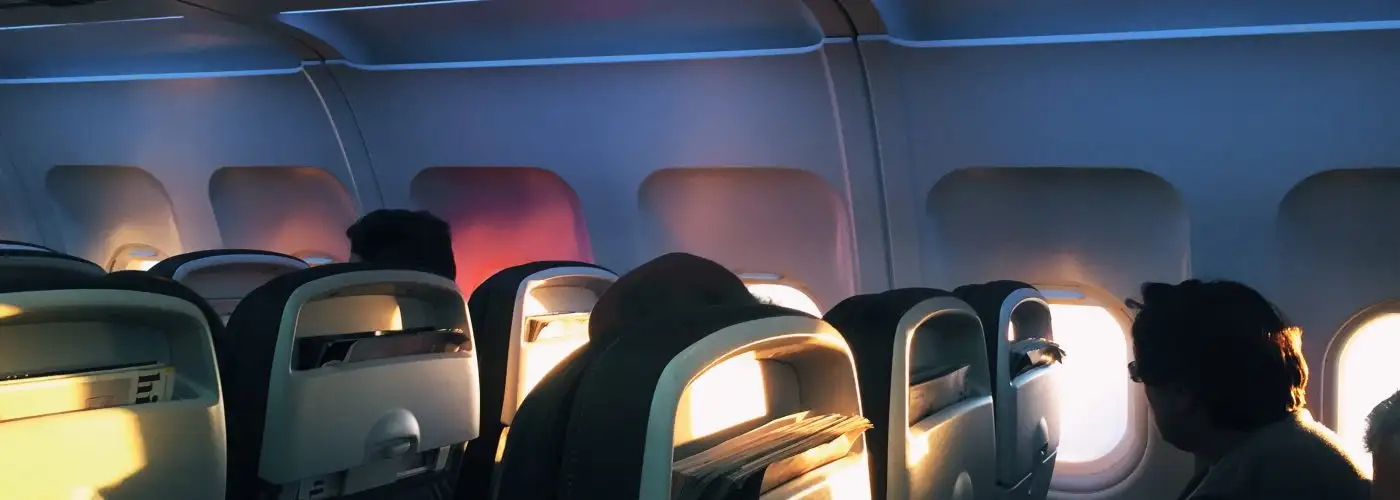The debate over inflight phone-calling raged hot and heavy two years ago, with the opposing forces seemingly gaining the upper hand. The Association of Flight Attendants called for an outright ban on the calls. A no-call bill was introduced in Congress. The DOT signaled its general opposition to inflight cell use on safety grounds, in particular that it would distract passengers from attending to routine safety announcements and flight crew instructions in emergency situations. And several airline CEOs pledged it would never happen on their planes.
While the DOT never formalized its inflight call policy, the FCC did:
Cellular telephones installed in or carried aboard airplanes, balloons or any other type of aircraft must not be operated while such aircraft are airborne (not touching the ground). When any aircraft leaves the ground, all cellular telephones on board that aircraft must be turned off.
Although that might seem to put an end to the matter, it doesn’t. The FCC rule allows for the possibility of making calls via WiFi, as is easily done using popular phone apps such as FaceTime, WeChat, and the like. And WiFi calls are no different from cellular calls in terms of their effects. They’re annoying, disruptive, and, as has been argued by many airline workers, they can create an unsafe condition in flight.
While that loophole has existed since the FCC rule went into effect, travelers and U.S. airlines have proceeded as though there were an outright ban on inflight calls.
This week, the DOT proposed a new rule that brings the issue of inflight calls sharply back into focus. The rule explicitly acknowledges the possibility of using WiFi or other non-cellular technology to make calls, and requires the airlines to advise passengers prior to booking if inflight calling is permitted on their flights. According to the DOT:
Consumers deserve to have clear and accurate information about whether an airline permits voice calls before they purchase a ticket and board the aircraft. Today’s proposal will ensure that air travelers are not unwillingly exposed to voice calls, as many of them are troubled over the idea of passengers talking on cell phones in flight.
Yes, of course travelers should be fully informed if their flight would allow calls. That’s simple transparency, and seems uncontroversial. What should raise eyebrows about the DOT’s proposal is the fact that it acknowledges that the question of inflight voice calls hasn’t been resolved.
Confusingly, the proposal can be interpreted in either of two ways. One, the DOT is gently suggesting that airlines consider allowing inflight WiFi calls. Or two, the Department is using the possibility of WiFi calls as a spur to create a new rule that goes beyond the FCC’s, to prohibit all voice calls. And indeed, according to its announcement, “The Department is also seeking comment on whether disclosure is sufficient or whether it should simply ban voice calls on flights within, to, or from the United States.”
The mixed messages here show that the DOT mixed up its priorities, misplacing the emphasis on communicating a product feature rather than on the feature itself. The Department should have first evaluated the desirability of an outright ban on all inflight voice calls. If such a ban were deemed in order, the advance-warning rule would be rendered moot.
And, as was the overwhelming consensus two years ago, a complete ban on inflight voice calls, no matter what the underlying technology, is in order. The FCC got it half right; the DOT should finish the job.
Reader Reality Check
Inflight voice calls: Yes or no?
More from SmarterTravel:
- Shopping Alert: Earn JetBlue Points for Amazon
- Senator Blasts United’s New No-Frills Fares
- The Best Hotel Program? It Depends
After 20 years working in the travel industry, and 15 years writing about it, Tim Winship knows a thing or two about travel. Follow him on Twitter @twinship.
We hand-pick everything we recommend and select items through testing and reviews. Some products are sent to us free of charge with no incentive to offer a favorable review. We offer our unbiased opinions and do not accept compensation to review products. All items are in stock and prices are accurate at the time of publication. If you buy something through our links, we may earn a commission.
Related
Top Fares From
Today's Top Travel Deals
Brought to you by ShermansTravel
Shop and Save with Country Inns...
Patricia Magaña
 Hotel & Lodging Deals
Hotel & Lodging Deals
$229 -- Chicago: Discounted Rates and...
Francesca Miele
 Hotel & Lodging Deals
$229+
Hotel & Lodging Deals
$229+
$188 -- Honolulu: Save on Oceanview...
Abigail Lamay
 Hotel & Lodging Deals
$188+
Hotel & Lodging Deals
$188+




